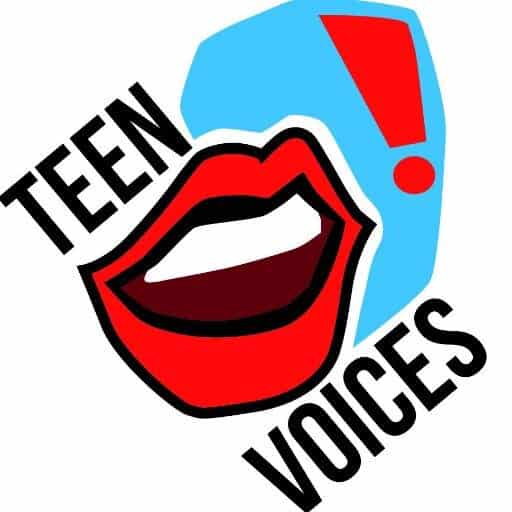[ad_1]
Over two centuries ago, amidst the reformation movement, Dorothea Dix campaigned for the reform of America’s treatment of the mentally ill (Michel, 1994). During the 19th century, those with severe mental illness were sent to prison to live out their lives. Dorothea proposed a new solution to caring for mentally ill persons: the asylum. The psychiatric asylum was proposed to be a safe place for long-term care for persons with mental illness and this was revolutionary.
Now the term asylum seems archaic, but the discussion of mental health remains a topic that sparks fierce debate. Even though advocates have been fighting for fair treatment since the 1800s, the discussion remains relevant because of the way mental health affects everyone.
Mental healthcare is very personal. For many, it literally means life or death. Depression, bipolar disorder, schizophrenia, anxiety, and any other disorder of the brain are invisible battles that break down ones sense of self. To turn our back on our friends and loved ones losing sight of themselves condemns our society to be selfless. To point out the humanity of what mental illness threatens is to share the stories of not only myself but of an entire generation that is now facing these challenges.
It is hard to explain all the battles in ones mind to someone who has never experienced it. For me, my depression and anxiety were debilitating and made me lose all sight of personal agency. The best way to describe this time in my life is: Watching a different television show every time you open your eyes in the morning. I had a psychiatrist, a therapist, and two parents who cared for me immensely. My parents even made sure I had the most advanced science on my side, taking me for brain scans and getting DNA testing. I was lucky, I had everything on my side.
That did not make any of the episodes easy for me, though. I also reached out for help and a Crisis Text Line volunteer was there when I felt most alone. Now, as a Crisis Text Line volunteer myself, every time I log on to volunteer, I see myself in the texters. Each texter becomes a mirror reflecting my past struggles, driving my dedication to being a compassionate presence during their times of crisis.
Often people ask me how I respond to people’s crises as a volunteer crisis counselor and whether or not I’m afraid I’ll say the wrong thing. However, the true power lies not in finding the perfect response, but in the act of genuine listening. We get lost in our heads trying to think of the next thing to say. The key is listening to the other person instead of figuring out what to say next. You would be surprised how much humans need to be heard. Ask clarifying questions. Try to understand nuance. Give the gift of listening. In fact, Crisis Text Line’s volunteer crisis counselors receive 30 hours of training that leads with empathy and includes reflective listening, collaborative problem-solving, and crisis management. With such a large scale mental health care crisis, the work of Crisis Text Line is relevant and important, with alarming rates of mental health diagnoses and suicide within the American population. For instance, the U.S. holds the disheartening record for the highest suicide rate globally (Tikkanen, 2020).
With more resources becoming available today, it is imperative that students also play a role in shaping solutions to the mental health crisis, which cannot be overstated. One of my favorite resources that provides more information on helping loved ones who are having suicidal thoughts is Suicide is Preventable. Introducing mental health education early with these resources equips the next generation with informed perspectives, fostering a nuanced understanding within themselves and their communities. As a Crisis Text Line volunteer crisis counselor, I’m also able to translate the skills I’ve learned in the training to help my community, myself, and my family and friends.
In states like California, Senate Bill 224 is requiring the implementation of health classes that emphasize mental health as a part of the curriculum (Jones, 2022). The new state standards include materials about “depression, schizophrenia, mood disorders, and other serious mental health conditions,” (Jones, 2022). Students are the future, so the more education they receive will help reduce stigma and build a cascading effect within our communities.
I truly believe that a more educated populace will make community healthcare possible. This was the vision of Kennedy’s New Frontier from the 1960s, a dream which was never fully realized. The stigma of mental illness is finally starting to fade. There has been incredible power in the last decade with celebrities talking about mental health. Simone Biles, the most awarded gymnast in history, discussed that going to therapy and taking anxiety medication were huge steps in destigmatizing mental health for athletes and women (Olympic Talk, 2018). Demi Lavoto’s discussion of Bipolar Disorder, bulimia and substance use disorders was shocking to the public in 2010, but was incredibly important in changing public misconceptions of these disorders. (Mayer, 2023) Most recently, musician Shawn Mendes canceled a tour for time to heal from mental health disorders (People, 2023).
Amplifying this effect with the power of social media—TikTok and Instagram in particular—presents an opportunity to seamlessly reach the minds of Gen Z. Influencers sharing posts from Mental Health America and other major players in mental health education could provide resources and education to demographics that may otherwise be missed, while also providing a platform to comment and share. Educating through social media sparks a conversation and, as a student, I can confirm that conversations are much more engaging than any lecture can provide.
Civic engagement, along with education, and legislative action are all imperative to shaping the mental health of all Americans. The bipartisan Improving Mental Health Access for Students Act (S.1236/H.R.2802) mandates that essential suicide prevention services such as 988 and Crisis Textline incorporated into higher education identification cards demonstrates just one small but critical role our leaders can play in addressing the mental health needs of students. Yet, there is much more that can still be done.
About the Author: Alex Antenen is a medical student at UCLA in Los Angeles and is a Crisis Text Line Campus Advocate and Volunteer Crisis Counselor.
[ad_2]










Hello, its nice article about media print, we all be aware of media is
a enormous source of facts.
My partner and I stumbled over here different website and thought I might as well check things out.
I like what I see so now i am following you.
Look forward to finding out about your web page yet again.
Hello, I wish for to subscribe for this webpage to get most up-to-date updates, therefore where
can i do it please help out.
It’s the best time to make some plans for the future and it’s
time to be happy. I have read this put up and if I may I desire to suggest you few interesting things or suggestions.
Perhaps you can write next articles relating to this article.
I desire to read more issues about it!
I am sure this piece of writing has touched all the internet viewers, its really
really nice piece of writing on building up new blog.
Helpful information. Fortunate me I discovered your site
accidentally, and I’m shocked why this coincidence did not came about earlier!
I bookmarked it.
Peculiar article, totally what I needed.
I’m gone to say to my little brother, that he should
also go to see this blog on regular basis to take updated from hottest reports.
Hiya! I know this is kinda off topic but I’d figured I’d ask.
Would you be interested in trading links or maybe
guest writing a blog article or vice-versa? My website discusses a lot of the same topics as yours and
I think we could greatly benefit from each other.
If you’re interested feel free to shoot me an email.
I look forward to hearing from you! Wonderful blog by the way!
Write more, thats all I have to say. Literally, it seems as though you relied on the
video to make your point. You definitely know what youre talking
about, why throw away your intelligence
on just posting videos to your site when you could be giving us something
enlightening to read?
Awesome post.